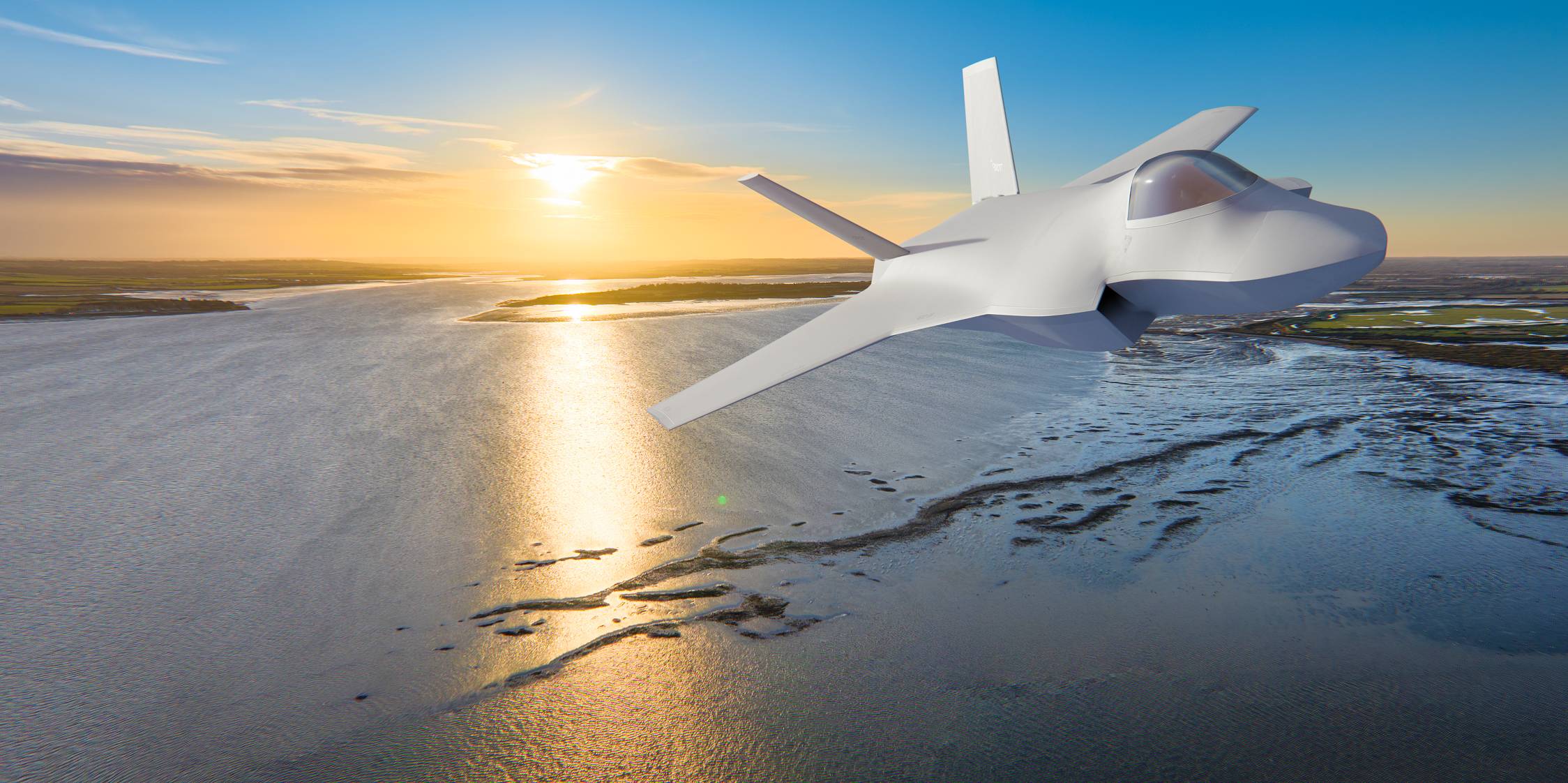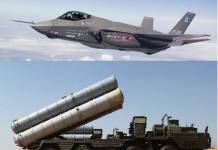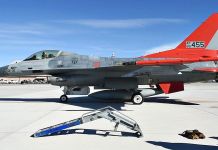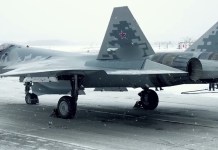The United Kingdom has unveiled a new rendering of its sixth-generation demonstrator aircraft, which is expected to fly by 2027.
The GCAP program, launched in 2022, merges the UK’s Tempest project with Japan’s F-X program. It is a joint undertaking involving BAE Systems (UK), Leonardo (Italy), and a Japanese consortium comprising Mitsubishi Heavy Industries and IHI.
Releasing the first rendering of the Combat Air Flying Demonstrator, British contractor BAE Systems stated that the demonstrator is being constructed from the aircraft at its facility in Warton, England.
The contractor described the progress achieved in the program as a milestone, asserting that two-thirds of the aircraft’s structural weight is now in manufacturing, including the wings and tails.
Although it is crucial to remember that this aircraft is not the intended GCAP fighter and that the final product of the UK-Italian-Japanese program will probably look quite different, the demonstrator will serve to de-risk the actual design and inform future development.
It is comparable to the British Aerospace EAP, a demonstrator developed in the UK that contributed to the creation of the Eurofighter Typhoon.
“Designed to test a wide range of new technologies, including the integration of stealth compatible features, the Combat Air Flying Demonstrator is a crucial part of the work to develop manufacturing processes and de-risk the next generation combat aircraft that will be delivered through the Global Combat Air Programme with the UK, Italy and Japan,” an official press statement published by the manufacturer read.

This is the first piloted supersonic aircraft developed in the United Kingdom in forty years. The manufacturer stated that Advanced robotic and digital manufacturing and assembly technologies are helping to shape the aircraft’s main fuselage, wings, and tail fins at BAE Systems’ Lancashire facilities, demonstrating the advanced stages of its development.
Military experts were quick to conclude that the demonstrator bears an uncanny resemblance to the Lockheed Martin F-35 Joint Strike Fighter, including the outward-canted twin tail fins and diverterless supersonic inlets (DSI), among others. Some others drew attention to distinct features, such as a wide nosecone, predicting that it could host a large radar and other Electronic Warfare (EW) equipment.
Aviation journalist and seasoned expert Gareth Jennings wrote on X: “The single image released shows it to be of the single-cockpit, canted twin tail, twin-engined configuration with a chined fuselage for LO stealth properties previously disclosed, but now with a larger cropped delta wing. Not dissimilar to recent #GCAP renderings (pic), though that features a larger again true-delta.”
The demonstrator will feature components from existing airframes, beyond the EJ200 Eurofighter engines, Gareth wrote in a detailed thread on X, listing the details gathered from the BAE demonstrator program. The Tempest demonstrator is expected to feature an all-new engine that is reportedly under development as of now.
In addition to this, the BAE officials stated that some of the advanced work they have done has received approval, adding that it will not be a VR display.
“For the first time, people can see how this cutting-edge demonstrator aircraft will look when it takes to the skies,” Tony Godbold, Future Combat Air Systems Delivery Director at BAE Systems, was quoted as saying in a company statement. However, he said that the finished demonstrator would likely feature changes and modifications to the rendering.
Notably, the unveiling of the renderings coincides exactly with the one-year anniversary of the GCAP partners’ unveiling of a concept model of their next-generation aircraft at the Farnborough International Airshow in July 2024.
That model had a bigger wingspan than the previous one and a far more advanced design to enhance the future combat aircraft’s aerodynamics, suggesting that more emphasis was being placed on range, speed, and payload than on traditional dogfighting agility.
The Combat Air Flying Demonstrator has now been flown more than 300 hours by test pilots from BAE Systems, Rolls-Royce, and the Royal Air Force (RAF) in a specially designed simulator. Pilots and engineers can quickly evaluate the flight control systems during increasingly difficult flight maneuvers through simulated flight trials, gathering vital information about the jet’s handling and performance years before it takes off.
“Collectively, this important work aims to dramatically reduce the time and costs involved in producing military jets, while maintaining the sovereign design, engineering, and manufacturing capabilities needed to keep the UK at the forefront of global aerospace innovation.”
Despite having a clear view of what will influence the ultimate Tempest demonstrator, it is challenging to estimate the size and configuration of the aircraft accurately.
GCAP Is On Track
The new rendering and the optimism expressed by Britain suggest that the program is on track after weathering some storms earlier this year.
Earlier, Reuters reported on May 30 that Japan is growing increasingly doubtful that the GCAP will meet its 2035 rollout target, potentially forcing Tokyo to fill air defense gaps with other fighters. “The joint Global Combat Air Programme (GCAP) established in 2022 is falling behind schedule due to a lack of urgency from Britain and Italy, which could push deployment beyond 2040,” said one of the sources quoted by Reuters.
Some reports at the time stated that the US was unhappy with Japan’s collaboration with the UK and Italy. “Washington is pressuring Japan, apparently through diplomatic and economic channels, and even through threats regarding its security collaborations, over the Asian country’s involvement in the GCAP,” a report in Infodefensa stated.
Moreover, with the US pitching the F-47 for export to Japan, concerns arose that Tokyo might opt for the American aircraft, further widening the gap between GCAP and its competitors.
Additionally, there were also doubts over the synergy between the three countries. For instance, Italy’s Defense Minister, Guido Crosetto, accused the UK of withholding crucial technologies in April 2025, asserting that this “selfishness” jeopardizes the fundamental spirit of cooperation vital to the program’s success. “You have to break down some barriers of selfishness. Italy has broken them down totally, and Japan has almost totally. It seems to me that the UK is much more reluctant to do this, and that’s a mistake because selfishness is the worst enemy of nations,” he added.
However, the dust seems to have settled. On July 7, the new governmental and industrial headquarters (HQ) for the Global Combat Air Programme (GCAP) was officially opened in the UK.
The building will also house the GCAP International Government Organisation (GIGO) joint governmental office which is responsible for administering the industrial framework, setting capability requirements, and supervising the development of the next-generation fighter jet.
As the main national industrial contractors in Edgewing, BAE Systems, Japan Aircraft Industrial Enhancement Co Ltd (JAIEC), and Leonardo will be housed in the new headquarters, along with governmental and military representatives from the three partner nations that make up the GIGO.
“The opening comes on the same day as the [UK] Defence Secretary [John Healey] met virtually with Italy’s Defence Minister Guido Crosetto and Japan’s Defence Minister Gen Nakatani to discuss the latest progress on GCAP. The programme is already creating thousands of highly skilled jobs across the UK, Japan, and Italy, including new apprentice and graduate roles, and supporting the strong relationship between industry and the armed forces of the three nations,” the UK MoD said at the time.
More recently, Italian Air Force Lieutenant General Antonio Conserva stated at the Global Air and Space Chiefs’ Conference in London that a flying prototype was expected by 2030. Luke Pollard, the Under-Secretary of State for Defence, stated that GCAP is “progressing well” on the second day of the conference. He said that “the programme means our nations can come together, not just to defend the Euro-Atlantic, but to support our values on a global stage.”
Thus, this indicates that the GCAP might finally be able to achieve its stated timeline of 2035, giving a significant boost to all three partners. The aircraft will replace the Eurofighter Typhoons in the British and Italian inventories, as well as the F-2 in the Japanese arsenal, allowing them to face modern security threats posed by near-peer adversaries like Russia and China.
The futuristic aircraft will be capable of seamless integration with drones, satellites, and ground-based systems, creating a networked advantage on the battlefield. While precise specifications remain confidential, the GCAP fighter is expected to incorporate a stealth-optimized airframe to minimize radar visibility.
Its distinguishing features are planned to include advanced artificial intelligence for real-time pilot assistance, directed-energy weapons for precise engagements, and a modular design allowing each participating nation to tailor the aircraft to its specific strategic requirements. The aircraft will also eventually be exported to other friendly countries.
- Contact the author at sakshi.tiwari9555(at)gmail.com
- Follow EurAsian Times on Google News




